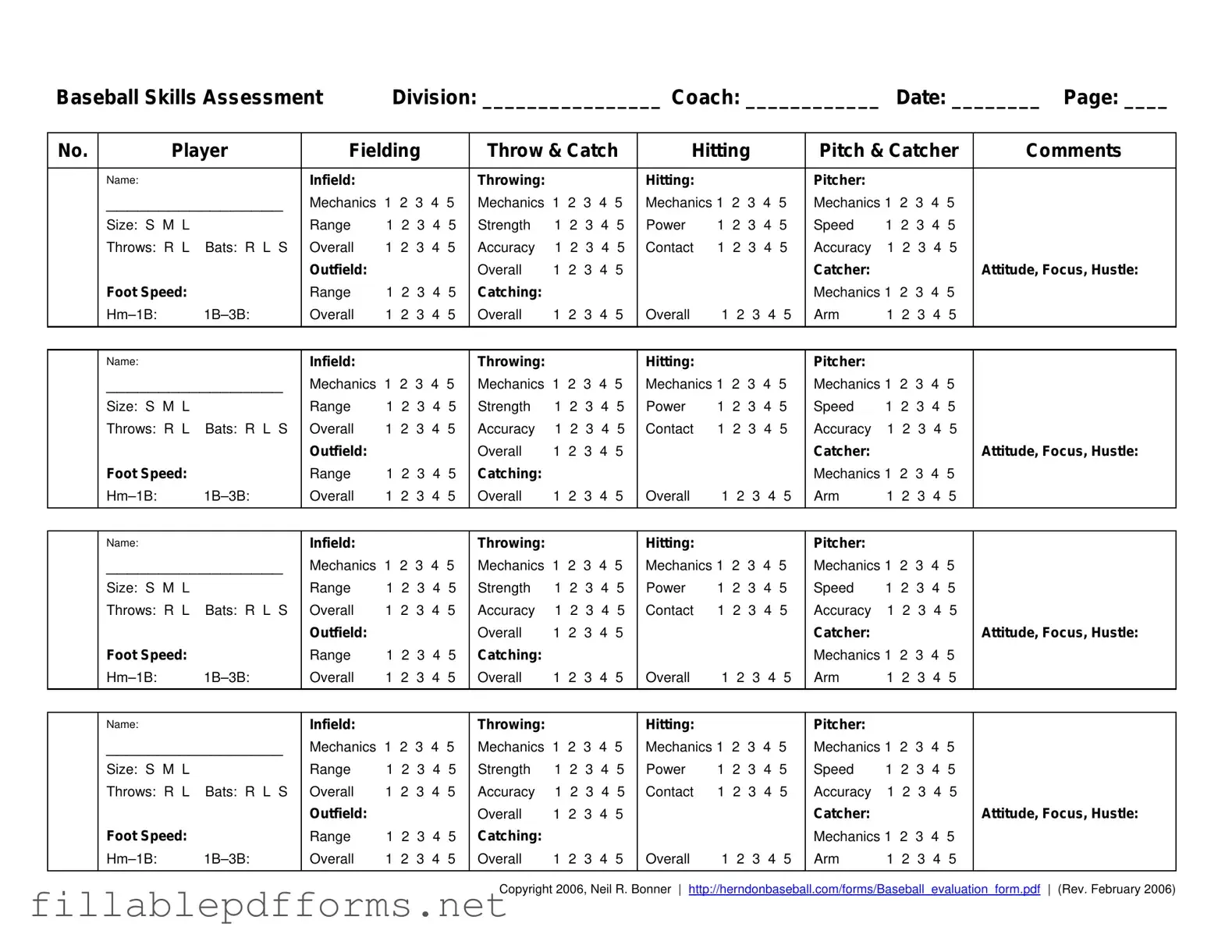The Baseball Assessment form is a crucial tool for coaches during tryouts and skill evaluations. It provides a structured way to assess various player abilities, including fielding, throwing, hitting, and pitching. Each player is evaluated on a scale from one to five in these categories, allowing coaches to quantify skills consistently. The form captures essential information such as the player's name, division, and the date of assessment, ensuring that all evaluations are organized and easy to reference. Coaches can also note comments and specific observations about a player's attitude, focus, and hustle, which are vital for team dynamics. The assessment includes categories for infield and outfield skills, as well as mechanics and overall performance. By utilizing this standardized format, coaches can fairly compare players and make informed decisions about team selections. This process not only aids in identifying talent but also helps in fostering a competitive spirit among players.
